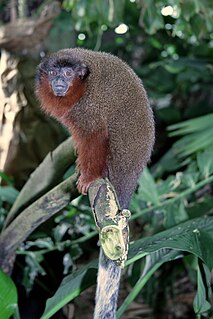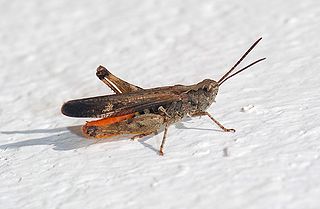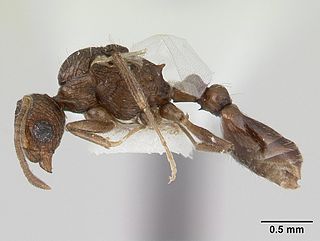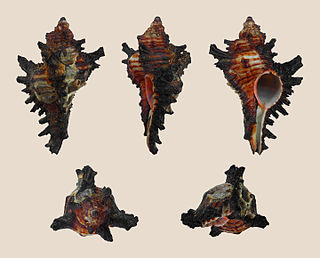
The northern Idaho ground squirrel is a species of the largest genus of ground squirrels. This species and the Southern Idaho ground squirrel were previously considered conspecific, together called the Idaho ground squirrel.

The brown titi, Plecturocebus brunneus, is a species of titi, a type of New World monkey, from South America. It is found in Brazil, Peru, and Bolivia. It was originally described as Callicebus brunneus in 1842.

The brown catshark is commonly found in the Pacific Ocean, ranging from the northern Pacific waters off the coast of British Columbia and south to the Baja California peninsula in Mexico. They may live as far south as Ecuador and Peru. Brown catsharks are deep-water sharks that live on the outer continental shelf and the upper slope. They have been known to live at depths ranging from 30 to 650 m and live on the bottom, usually in muddy or sandy areas. The brown catshark, when originally described, was called Catulus brunneus.

Chorthippus brunneus, a member of the subfamily Gomphocerinae, are more commonly referred to as the common field grasshopper. They were first described by Thunberg in 1815 and also are known as Gryllus brunneus although this name is not adopted in the literature. The IUCN lists C. brunneus as Least Concern.
The dark-brown serotine is a species of vesper bat found in Central and West Africa.
Zygodontomys brunneus, also known as the brown zygodont, brown cane mouse, or Colombian cane mouse, is a rodent species in the genus Zygodontomys of tribe Oryzomyini. It is found only in Colombia.

Temnothorax brunneus is a species of ant in genus Temnothorax, that can be found in Algeria and Morocco.

Chicoreus brunneus, common name the adusta murex, is a species of predatory sea snail, a marine gastropod mollusk in the family Muricidae, the murex snails.
Eugamandus is a genus of longhorn beetles of the subfamily Lamiinae. It was described by Warren Samuel Fisher in 1926.
Eugamandus flavipes is a species of longhorn beetles of the subfamily Lamiinae. It was described by Fisher in 1935.
Eugamandus oakleyi is a species of longhorn beetles of the subfamily Lamiinae. It was described by Fisher in 1935.
Copelatus brunneus is a species of diving beetle. It is part of the genus Copelatus of the subfamily Copelatinae and the family Dytiscidae. It was described by J. Balfour-Browne in 1939.
Eugamandus cayamae is a species of longhorn beetles of the subfamily Lamiinae. It was described by Fisher in 1926, and is known from Cuba.
Eugamandus darlingtoni is a species of longhorn beetles of the subfamily Lamiinae. It was described by Fisher in 1942, and is known from Dominicana.
Eugamandus jamaicensis is a species of longhorn beetles of the subfamily Lamiinae. It was described by Vitali in 2003, and is known from Jamaica, from which its species epithet is derived.
Eugamandus ricarti is a species of longhorn beetles of the subfamily Lamiinae. It was described by Micheli in 2003, and is known from Puerto Rico.
Eugamandus schwarzi is a species of longhorn beetles of the subfamily Lamiinae. It was described by Fisher in 1926, and is known from Cuba.
Eugamandus tuberculatus is a species of longhorn beetles of the subfamily Lamiinae. It was described by Fisher in 1942, and is known from Cuba.
The Pacific spoon-nose eel is an eel in the family Ophichthidae. It was described by José Luis Castro-Aguirre and Sergio Suárez de los Cobos in 1983, originally under the genus Notophtophis. It is a marine, tropical eel which is known from the eastern central and southeastern Pacific Ocean, including the Gulf of California, Colombia, Mexico, Costa Rica, Nicaragua, Ecuador and Panama. It dwells at a maximum depth of 10 metres (33 ft), and inhabits sand and mud sediments. Males can reach a maximum total length of 140 centimetres (55 in), but more commonly reach a TL of 60 centimetres (24 in).
Thomas's Ethiopian brush-furred rat, also called the brown brush-furred rat or the brown brush-furred mouse, is a species of brush-furred mouse from Southern Ethiopia.







